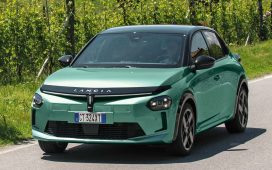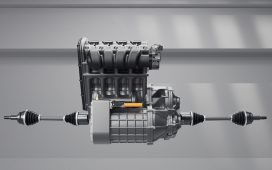Automakers are adopting electrification via hybrids, plug-in hybrids, and pure BEVs. It’s not just the automakers that are calling the shots here; government rules and regulations play a big role as well. While North America and a lot of European countries are laying out policies for a smooth transition towards BEVs, there’s one country that’s been ruling the roost, and that’s China.
Rho Motion, an EV research publication, recently revealed that PHEVs are becoming a hot commodity across the world, but China is in a league of its own compared to the U.S. and Europe. How does this impact the U.S. and Europe in the long run?
In order to give you the most up-to-date and accurate information possible, the data used to compile this article was sourced from various manufacturer websites and other authoritative sources, including Rho Motion.

Related
The Real Reason Why America Can’t Build Affordable Electric Cars Like China Can
China’s dominance in the global EV market is due to a number of crucial factors.
China Is Reporting Strong Growth In Terms Of Rechargeable Vehicles
It is no secret that China is flooding the market with electrified vehicles. It’s not just established players like BYD that have come out all guns blazing, but it’s also new startups like Xiaomi that look promising. The study by Rho Motion reveals that in the first five months of 2024, over five million PHEVs were sold globally, resulting in a 20-percent year-over-year growth. In May alone 1.3 PHEVs were sold, which is also a 20-percent increase compared to the same period last year. However, China is the driving force here, reporting a 31-percent and 36-percent growth in those periods, respectively.
Compare this to the statistics in U.S. and Europe and you’ll realize things here are on the opposite side of the spectrum. Europe showed a growth of only four-percent in the first five months this year, and the U.S. a growth of five-percent. While China reported even better figures in May, things went downhill in Europe and North America, with the respective markets reporting a nine-percent and three-percent decrease year-over-year.

Related
What Joe Biden’s New China Tariffs Mean For The North American EV Industry
US President Joe Biden cracks down on Chinese imports by hiking up tariffs on specific products. What does this mean for the North American EV market?
How The U.S. And Europe Are Safeguarding Their Markets From Chinese Invasion
China holds over 50-percent of the PHEV market share, overshadowing the U.S. and European markets by a huge extent. To safeguard their markets from the electrified Chinese cars, Europe has instated a higher tariff, up to 38.1-percent, on Chinese EVs, whereas the Biden administration recently increased the tariff from 25- to 100-percent in the U.S. These Chinese EVs aren’t eligible for the $7.500 federal tax credit either.

Add TopSpeed to your Google News feed.
It must also be noted that some Chinese EVs are cheaper and cost less than the cheapest American ICE models. Let’s not forget that the American market is a lot more demanding than the Chinese market. For instance, the Wuling Hongguang Mini EV comes with a 26 kWh battery pack, a power output of around 40 horses, and a top speed of 60 mph. This EV costs around 32,800 RMB, which is approximately $4,500 as per the current exchange rates. An EV like this works as an urban mobile in China, but may not in the U.S. or even Europe for that matter.
Although these measures are to safeguard their own economies and markets, Rho Motion noted that on a global scale, the climate goals will be missed. The 2024 Federal Tax Credit program further reduced the number of EVs eligible for the rebate, thus not making the market as lucrative as before. With higher production volumes, you can expect the EV prices to eventually go down, but we’ll have to wait and watch how long that could take.









